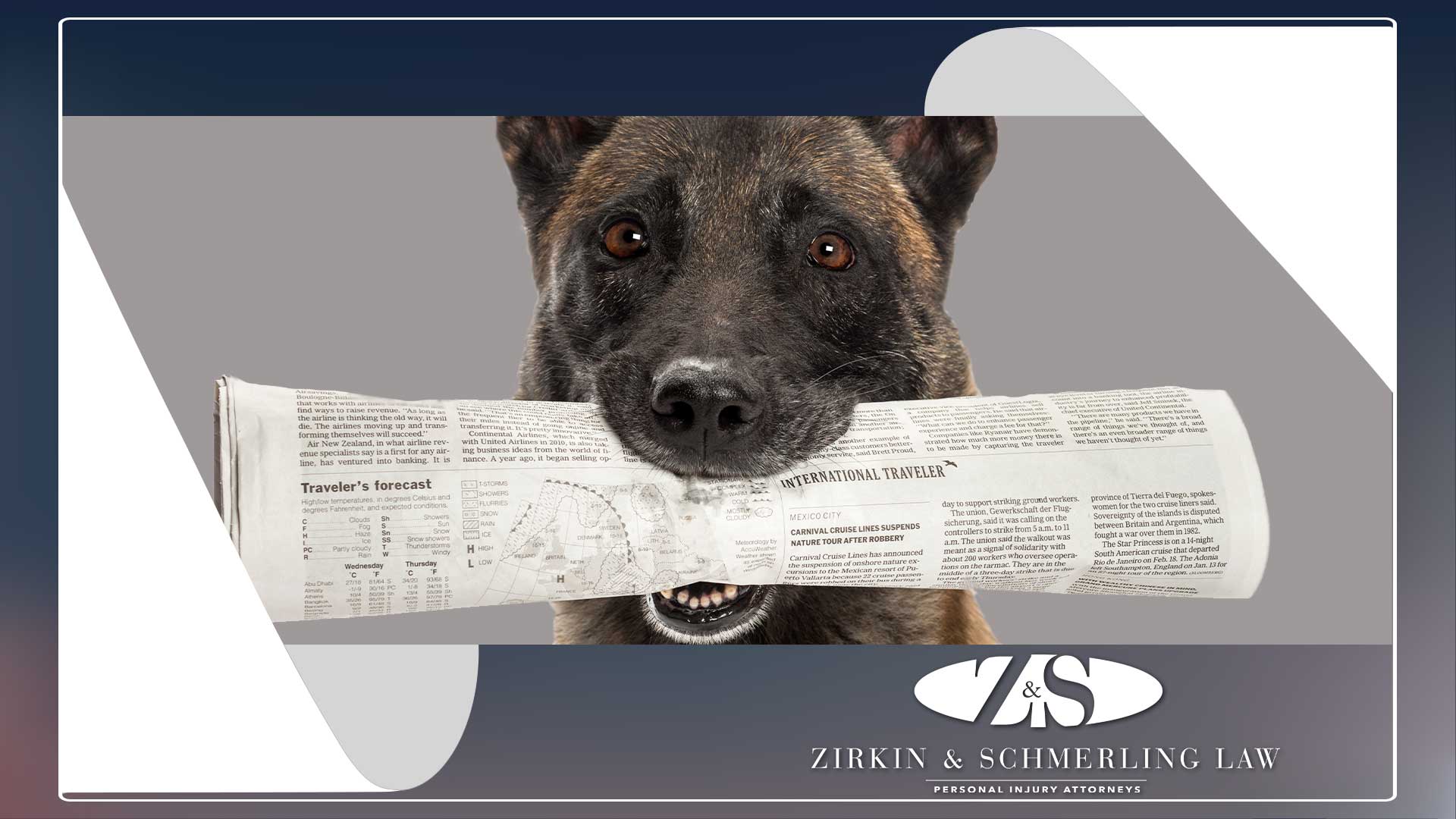
June 4th to the 10th is National Dog Bite Awareness Week. And this year, the United States Postal Service (USPS) released alarming dog attack statistics, including which cities and states have the most dog bite incidents against postal workers.
These stats serve as a sobering reminder that dogs can pose a serious threat to mail carriers and other individuals, and these attacks can cause devastating and life-changing injuries.
If you’ve been injured by a dog, it’s important to seek legal assistance so that you can recover money for your medical expenses and other losses. For experienced Maryland dog bite attorneys, contact Zirkin & Schmerling Personal Injury Attorneys.
Regardless of whether you’ve been the victim of a dog attack, it’s important to know some of the dangers of these loveable pets. In this blog, you’ll learn all about national dog bite statistics, common dog bite injuries, and what to do if you’re bitten.
USPS Recommendation For Dog Owners
The United States Postal Service stated that this year’s Dog Bite Awareness Week theme is, “Even good dogs have bad days,” as the majority of dog bites come from pets believed to be harmless. Even if a dog has never shown signs of aggression, it can still attack a mail carrier or another unsuspecting victim if they feel threatened or territorial.
Linda DeCarlo, Senior Director of USPS Occupational Safety and Health, stated that mail carriers are especially at risk of being bitten by supposedly-gentle dogs. She stated that “When our mail carriers are bitten, it is usually a ‘good dog’ that had not previously behaved in a menacing way.’”

Because dog attacks are so common against postal workers, the USPS provided crucial tips for preventing these incidents, including
- Lock up your dog in a separate room before opening the door for a mail carrier.
- Avoid having family members take mail directly from mail carriers. Your dog may believe that the mail carrier is a threat and attack to protect its owners.
- You can sign up for Informed Delivery so that you know when to expect the mail carrier’s arrival. That way, you can take appropriate measures to ensure your dog doesn’t harass or attack the USPS worker.
If your household owns a dog believed to be a threat, the USPS may require you to pick up your mail from the Post Office.
USPS Dog Bite Awareness Statistics
In addition to releasing recommendations for dog owners, the USPS provided the public with statistics regarding dog bite incidents against postal workers. The following states had the highest numbers of dog attacks against USPS employees in 2022:

- California – 675
- Texas – 404
- New York – 321
- Pennsylvania – 313
- Ohio – 311
- Illinois – 245
- Florida – 220
- Michigan – 206
- Missouri – 166
- North Carolina – 146
While Maryland didn’t appear on the USPS’s top states list, Baltimore was in the top 20 cities with the most dog bites against postal workers. We had a total of 20 dog-bite incidents against postal workers in 2022.
On top of the USPS stats, it’s worth noting that around 4.5 million Americans are injured by dogs every year, 800,000 of which require medical attention. Additionally, children are especially at risk of suffering from a dog injury and are more likely to suffer from serious or fatal injuries.
Common Dog Bite Injuries
Dog bite accident victims can suffer from a variety of injuries that range from mild to fatal. Some common types of injuries include:
- Puncture wounds: Dogs can leave small, painful puncture wounds on a victim, potentially leading to infection.
- Lacerations: A dog bite can cause deep cuts or tears in the skin and can cause tissue damage. Lacerations may require stitches or surgical intervention to repair the damage.
- Abrasions: These are superficial scrapes or scratches on the skin’s surface. While less severe than puncture wounds or lacerations, abrasions can still cause pain and leave you vulnerable to infections.
- Avulsion injuries: Avulsion injuries occur when a dog’s bite tears away a portion of the skin or underlying tissue, resulting in a flap of skin or tissue that may require surgical reattachment.
- Fractures and broken bones: A strong dog bite can cause fractures or breaks in bones, particularly in the hands, fingers, and arms.
- Nerve damage: Severe dog bites can injure your nerves, leading to pain, numbness, or loss of function in the affected area.
- Infections: Dog bites carry a risk of infection due to bacteria in the dog’s mouth. Common infections include cellulitis, rabies, and tetanus.
- Emotional and psychological trauma: Dog bites can have lasting emotional and psychological effects, particularly in children. Post-traumatic stress disorder (PTSD) and a fear of dogs are common after a dog bite incident.
Regardless of the extent of your dog bite injuries, you must seek medical attention immediately.
What Should I Do If I’m Bit By a Dog?
If you or a loved one is ever bitten by a dog, it’s critical that you follow these steps to ensure your safety and recover damages:
- Move to a safe place: Distance yourself from the dog to prevent further bites or injuries if possible.
- Contact emergency services if necessary: If the bite is severe or potentially life-threatening, call 911.
- Clean the wound: If the bite isn’t serious but still broke the skin, you should gently wash the wound thoroughly with soap and water to reduce the risk of infection.
- Apply first aid: Use a clean cloth or sterile dressing to apply gentle pressure to control any bleeding.
- Protect the wound: After cleaning the wound, apply an over-the-counter antibiotic ointment and cover it with a sterile bandage to prevent dirt or bacteria from entering.
- Seek medical attention: Even if the bite seems minor, it’s still crucial to seek medical evaluation. Contact your healthcare provider, inform them about the incident, and follow their instructions for further evaluation and treatment.
- Report the incident: Contact local authorities to report the dog bite. Provide them with accurate details about the incident, including the dog owner’s information, if available.
- Gather evidence for your claim: You may not be able to gather evidence at the scene of the incident due to your injuries, but it’s important to have proof that you were hurt and suffered damages as a direct result. You can collect video and photographic evidence of the dangerous dog and your injuries, gather eyewitness statements, and retain all medical documentation indicating that you received treatment.
- Call a dog bite lawyer: Finally, you must get in touch with a personal injury attorney who has a great deal of experience handling dog bite accident cases.
Call a Maryland Dog Bite Attorney Today
Recovering the money you deserve after a dog attack can be challenging, especially because the owner’s insurance company will likely do everything it can to avoid paying you full compensation for your losses.
Fortunately, you don’t need to go through the claim process alone — contact Zirkin & Schmerling Law to get expert legal support in your dog bite injury case.
You can schedule a no-risk, free consultation with our team today by calling 410-753-4611 or by contacting us online here.
